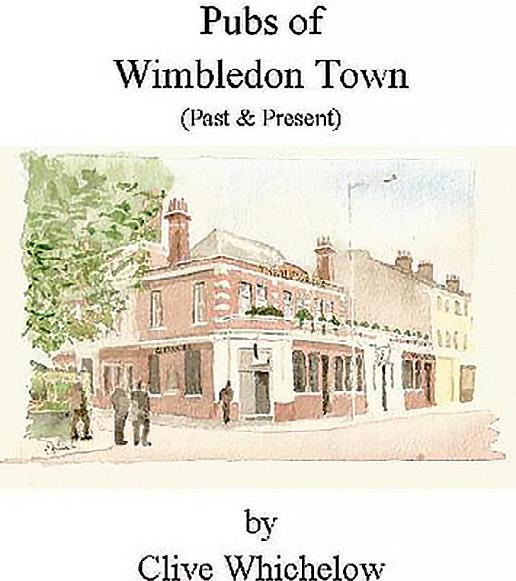Clive Whichelow is well known for his books on the history of Wimbledon and the surrounding area. He has written two books about the area’s pubs. The first covered the pubs of Wimbledon Village and the second those in the old parish of Merton. He has now released a third book, somewhat delayed by the pandemic, called the Pubs of Wimbledon Town (Past & Present), and which covers the rest of the area. Here, Clive kindly previews the new volume for us.

Up until the 1860s ‘Wimbledon’ really meant what we now call Wimbledon Village. Before the railway came in 1838, most of the area down the hill was farmland which was yet to be developed.
The first development wasn’t in the town centre but off Haydon’s Road, in what is now South Wimbledon, when, in the 1850s, North, South, and East Roads were laid out. Soon to follow were the back street beer shops such as the Duke of Cambridge, St George, White Hart, Plasterers Arms and the Joiners Arms etc, with the latter two unashamedly appealing to the working men who were beginning to build what was then known as New Wimbledon. Up until then the only pub nearby was the Horse & Groom in Haydon’s Road (now the Garden Shed) which was there by 1838. The only one of those little back street pubs that survives to this day is the Sultan, which will be well known to readers of London Drinker. Slightly further away were the Plough, which gave its name to Plough Lane, home of AFC Wimbledon and the King’s Head in Merton High Street, both dating from the early 1700s and both now sadly gone.
The town centre pubs came a little later. The Alexandra at the foot of Wimbledon Hill and the Prince of Wales, almost opposite the station, were both opened in the 1860s and survive to this day although the Broadway, also 1860s, has gone, as has the South Western which opened in 1855 and was next to the original Wimbledon station, which was across the road from where it is now.
One pub which few may remember now was the Duke of Edinburgh in Kingston Road where the fire station now stands. It was there by 1869 and set its sights high from the off, providing football and cricket fields, music hall entertainment, dining, meeting rooms etc and was the HQ for no less than sixteen cycling clubs. Sadly, it was bombed during the war and finally closed down in the 1950s.
The new book also includes an Edwardian survivor, the Raynes Park Tavern, once home to writer and Bohemian chronicler Henry Savage. We have however lost the Junction Tavern but perhaps we have been more fortunate than some areas in keeping at least some of our ancient and much- loved locals.
The Pubs of Wimbledon Town (Past & Present), by Clive Whichelow, was published in September and is available from good bookshops or from enigmapublishing.co.uk.